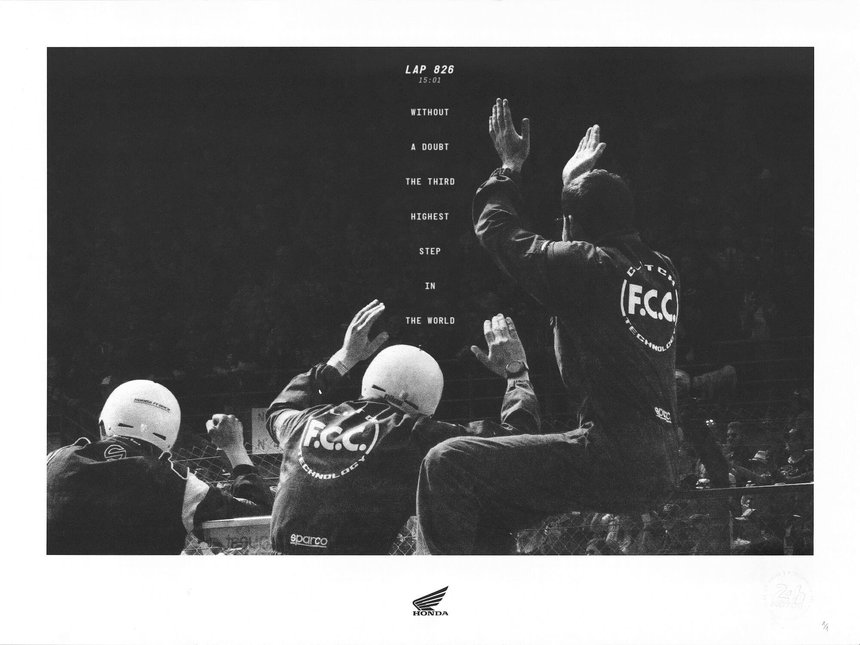
DDB Paris champions defeat in its retelling of 24 Hours of Le Mans
24 Hours of Le Mans is one of the world’s most celebrated racing events. Held annually near the town of Le Mans in northwestern France, the first ever race took place in 1923, and over the course of the last 100 years it has grown to become the cultural and sporting icon that it is today. In the race, which is unlike any other, teams compete not to set the fastest time but instead to drive the furthest distance, speeding around the track for 24 hours straight to see how far they can go whilst battling fatigue and mechanical failure. As such, Le Mans is more than a test of pure driving ability — it’s also a test of endurance, and going the distance requires skill, commitment and outstanding teamwork.
June 2022 marked the 90th edition of the race, and one team in particular was there to make history: If Honda took home the trophy, it would become the most successful manufacturer of all time. Unfortunately this was not to be, and despite their best efforts the Honda team finished third. Crushed but unwilling to let their dedication go overlooked, the company worked with DDB Paris to turn a simple moment of defeat into a captivating story of highs and lows, wins and losses. Composed of evocative photography and rich design, The Beautiful Fail campaign — which picked up a Wood and two Graphite Pencils at this year’s D&AD Awards — is a fitting tribute to the hard work and unwavering commitment shown by the Honda team on that fateful day.
Here, we speak to Art Director Jean Weessa and Copywriter Damien Veillet from DDB Paris about how they brought this moving story to life.

Defeat can be more powerful than victory
At the heart of this campaign is the idea that not every failure is a loss, and that sometimes, the best lessons can be learnt from what went wrong rather than what went right. This was apparent to the DDB Paris team from the start, and they knew that, rather than focusing on the final result, this project should commemorate all of the emotional moments that led up to it. “We wanted to tell the story of 24 Hours of Le Mans through the eyes of the Honda team,” explains Weessa. “The way the race unfolded meant that, in the end, it's the story of a defeat, but we were particularly moved by the human and physical commitment of the team, so we decided to call the project The Beautiful Fail.”
Lead on the human story
The driving force behind any good story is a human narrative, and this campaign was no different. When considering how to angle it, the DDB Paris team were keen that the focus be not on the motorbikes, but on the people driving (and fixing) them. Even before the race began they had decided to commission Julien Bon as the photographer. Specialising in lifestyle rather than sports imagery, he was certainly not a typical choice for the brief, but after laying eyes on his photographs of the race, the team knew they were right to trust their instincts.
“By choosing him, we focused on the human side of the race, but also took the risk of entrusting the project to a photographer who had never photographed motorcycles speeding at 300km/h before,” says Veillet of the decision. “[However], in view of the quality of the work he produced, we made the right choice.”

Be your own reference point
Beyond simply opting for a potentially risky photographic approach, DDB Paris also chose not to study the visual history of Le Mans. Whilst most teams would likely lean on the photography of years gone by to inform their own strategy, Weessa says the work of iconic photographers such as Henri Cartier-Bresson and Raymond Depardon — who are known for their documentation of Le Mans — was of little interest to them. They were confident enough in their idea that they didn’t feel the need to look to the past in order to understand the future.
“To be honest, we didn't study the work of Bresson and Depardon,” admits Weessa. “We simply went to Le Mans with the aim of bringing back a documentary; a story of 24 hours of racing. The events of the race and the men who took part gave incredible power to the images.”

The physicality of photography
As much as the men on the machines were the focal point, DDB Paris knew they couldn’t make a campaign about Le Mans without referencing the motorbikes that carried them faithfully around the track. To bring another dimension to Bon’s captivating imagery, they drained the oil from the Honda bike that participated in the event and transformed it into ink that could be used to make prints of the photographs. “The problem was finding screen printers who were willing to put motor oil on their screen print machines,” recalls Veillet. “But we eventually found one a few kilometres from Paris called Shlag Lab, and we spent a few days with them carrying out tests to obtain the results we wanted.”
DDB Paris ended up with 24 beautiful silkscreen prints, each of which captured in grainy, monochromatic glory the trials and tribulations of the Honda team. These were given away to followers of the Honda France Instagram account over the course of 24 hours, mirroring the nature of Le Mans. “Honda posted the silkscreens one after the other for 24 hours, respecting the timeline of the real race,” says Weessa. “Lap 1 was posted at 3pm, lap 485 at 4.13am and so on. The first subscriber to reply under each post won the silkscreen. It was crazy, some subscribers stayed awake for 24 hours hoping to win one… In fact, the brand recorded its best engagement and participation rates ever with this campaign.”









